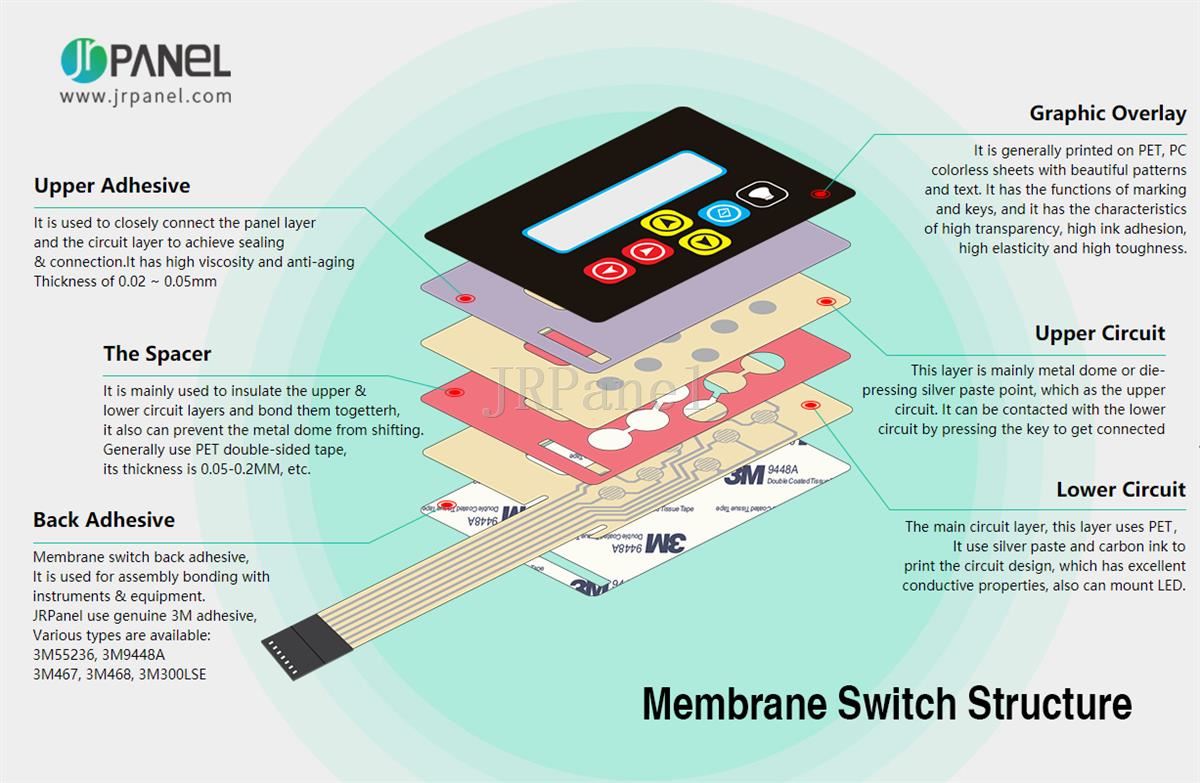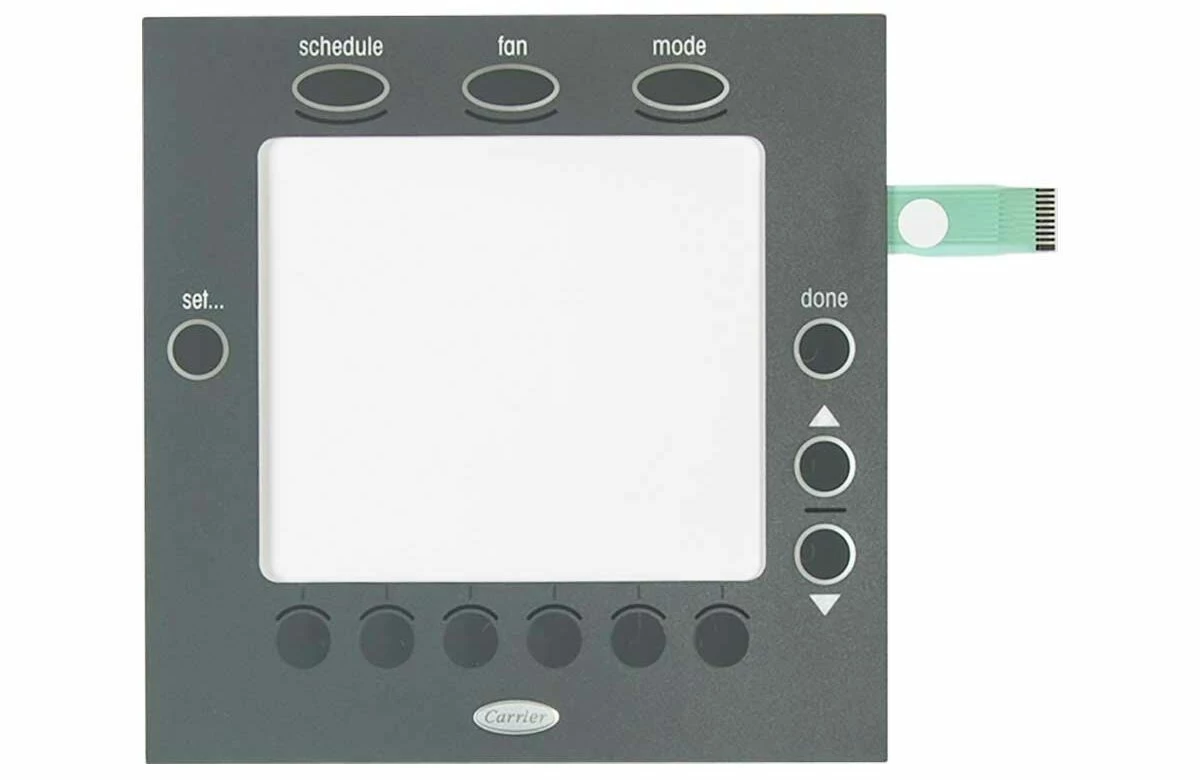Learn Exactly How Membrane Switches Assistance Touch-Sensitive Applications with Accuracy
Learn Exactly How Membrane Switches Assistance Touch-Sensitive Applications with Accuracy
Blog Article
The Ultimate Resource on Membrane Switches: Style, Performance, and Applications
Membrane layer changes function as an appealing junction of layout and functionality, playing an essential function in contemporary interface across different fields. This source unloads the vital components that add to their performance, consisting of visuals overlays and circuit traces, while additionally clarifying the systems behind their pressure activation. As we discover the diverse applications of membrane buttons, it becomes apparent that their flexibility and resilience are vital in atmospheres ranging from health care to consumer electronic devices. The nuances of their style and operational principles might disclose also much deeper understandings worth thinking about.

Recognizing Membrane Buttons
Membrane layer switches are a kind of individual interface innovation widely made use of in various digital tools, defined by their slim, flexible style and performance. These switches contain numerous layers that include graphic overlays, glue layers, and circuitry, enabling a small and reliable user interface for users. They can be found in devices, medical gadgets, and commercial control panels, giving a trusted technique for customer communication.
Among the key advantages of membrane switches is their ability to withstand impurities such as dust and dampness, making them suitable for settings where resilience is necessary. Their inconspicuous design permits smooth integration into different applications, while the personalized visuals overlays boost user experience by giving clear visual feedback. Additionally, membrane switches can suit a selection of technologies, such as responsive comments and backlighting, additional improving their functionality.
The manufacturing process for membrane layer changes normally involves screen die-cutting, printing, and lamination strategies, guaranteeing precision and uniformity in production. On the whole, membrane layer switches over represent a efficient and versatile remedy for modern-day electronic gadgets, combining capability with visual appeal in customer interface design.
Trick Parts and Design Elements
A variety of vital elements and layout components integrated to produce an effective membrane layer switch. At the core, the visuals overlay offers both practical and aesthetic purposes, supplying an easy to use user interface while securing interior components from environmental factors. The option of products, commonly polyester or polycarbonate, influences durability and tactile responses.
Under the overlay, the adhesive layer makes sure the switch adheres safely to the substratum, which can be steel, plastic, or glass. The spacer layer is critical, as it maintains the needed gap in between the overlay and the circuit layers, permitting efficient actuation. Membrane Switches. Circuit traces, normally made from conductive ink or adhesive, are published on a flexible substratum, making it possible for electric signals to be transmitted when pressure is used
Design factors to consider additionally include the plan of responsive domes or embossing that provide physical feedback to the user, improving the general experience. Additionally, the format and spacing of the switches must be optimized for simplicity of usage, ensuring that users can browse the user interface with ease. Generally, these parts and layout elements work synergistically to produce a trusted, functional membrane layer button customized to certain applications.
Capability and Operation Device
At the heart of efficient performance for membrane switches lies their operational mechanism, which helps with individual communication via a straightforward yet efficient layout. These buttons operate on the principle of pressure activation, where an individual uses pressure to an assigned area of the button (Membrane Switches). This action presses the layers of the switch, completing an electric circuit that sends out a signal to the linked gadget
The building and construction usually includes a leading graphic layer, a sticky spacer layer, and a lower circuit layer, which jointly form a robust interface. When pressure is used, the top layer collapses versus the bottom check my source circuit layer, enabling conductive traces to link. This layout not only enables clear responsive comments but also guarantees durability and dependability, as the buttons are usually resistant to dust and wetness.
In addition, the versatility of membrane switches permits combination with numerous innovations, consisting of LED indicators and microcontrollers, enhancing their functionality. By providing a structured interface that minimizes mechanical wear, membrane changes continue to be a favored choice in applications varying from consumer electronic devices to commercial equipment, making sure ideal efficiency and individual contentment across diverse atmospheres.
Kinds of Membrane Layer Buttons

Another substantial category is lit up membrane buttons, which include backlighting to boost exposure in low-light problems. These buttons are frequently made use of in control panels and dashboards where clear visibility is essential.
Furthermore, there are personalized membrane layer changes created to satisfy details dimensional, visual, and functional requirements. These customizations can include unique shapes, colors, and layouts, permitting for smooth combination right into different tools.

Applications Across Different Industries
Just how do membrane layer switches boost functionality across diverse industries? These flexible parts are integral to numerous applications, delivering structured interface and durable efficiency. In the clinical industry, membrane switches play a critical function in tools such as diagnostic devices and patient monitoring systems, where integrity and ease of cleaning are vital. Their capability to endure harsh atmospheres makes them suitable for research laboratory tools and surgical devices.
In the auto market, membrane layer buttons are generally made use of in dashboards and control board, providing intuitive controls that enhance driver safety and security this and ease. The consumer electronics market also gains from their lightweight and customizable features, allowing streamlined right here designs for smart devices and home devices.
Additionally, membrane buttons locate applications in commercial automation, where they add to efficient machinery operation and tracking systems. Their resistance to dust and wetness guarantees performance popular conditions (Membrane Switches). In addition, the food and beverage market employs membrane layer switches for tools control, where health and resilience are critical
Final Thought
In verdict, membrane layer changes represent a critical advancement in customer interface technology, characterized by their one-of-a-kind layout and performance. The versatility of membrane layer switches over facilitates their application across varied sectors, from clinical devices to customer electronic devices.
Membrane changes offer as an interesting crossway of layout and performance, playing a crucial duty in modern-day customer interfaces throughout various fields.Membrane switches are a kind of user interface modern technology extensively utilized in different electronic gadgets, defined by their slim, versatile layout and capability.At the heart of efficient functionality for membrane switches exists their functional device, which facilitates user interaction through an easy yet efficient design. These switches run on the concept of stress activation, where a user uses pressure to an assigned location of the button.In final thought, membrane layer switches stand for an important innovation in customer interface innovation, characterized by their one-of-a-kind layout and functionality.
Report this page